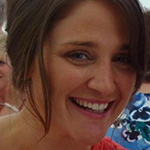 Kate Austin is an Information Officer at the Careers Service, her role involves providing one-to-one information and advice to students and recent graduates. As part of the Information Team she researches, develops and edits content for the Careers Service website.
Kate Austin is an Information Officer at the Careers Service, her role involves providing one-to-one information and advice to students and recent graduates. As part of the Information Team she researches, develops and edits content for the Careers Service website.
The Careers Service site has recently been through the Go Mobile process. In this post Kate shares the Go Mobile experiences of the Careers team.
The move to a mobile platform was a huge project for us. The Careers Service website covers anything and everything about careers and employability, with users including students, graduates, prospective students, employers and staff.
As you can imagine with all that information our site was huge – so big it has now been broken into four different websites! Now we are through the process and our new website is live, read on for our tips on surviving your own Go Mobile project.
Allow yourself plenty of time
Make sure you set aside plenty of time for your Go Mobile move. It’s a big project and I can promise everything will take a lot longer than you think. Allow extra time to tackle any bumps in the road or issues that come along. When our website went live, it wasn’t perfect – we had problems with broken links and redirects, issues with images and inconsistencies on our new occupations site. Planning in a little extra time for us to check our site before going live would have been a huge bonus.
Consider images
We soon realised the images on our old Careers Service website were not going to work on the new Go Mobile website. Our images were a little outdated and didn’t work well in the new content types, like mastheads.
If, like us, you need to have a photoshoot, make sure you brief the photographer on the types of images you’re going to need. I’d suggest having photos taken which would work well as mastheads. These need to be high quality, large photos with the focus of the image on the right-hand side. If you have your photos taken as mastheads you can always crop down the images to suit other content types later on.
If you’re unable to have a photoshoot, then make use of the University photo library. Thinking creatively and doing a bit of digging can help you find images to suit most pages. For the Careers Service Occupations website, we even managed to find images which represented particular sectors. On our Education pages, for example, we used an image from a PGCE teaching class. We were also able to use an image from a Geomatics course field trip for our page which focusses on careers in the built environment.
Use the demo site
The new content types allow you to display the information on your pages in a range of different ways.
When you’re in the planning process, it’s much easier to figure out what style will work best for your content once you’ve seen the different types in action. So have a look at the demo site and websites which have already gone through the Go Mobile process.
Make use of the training sessions
The training sessions from the Corporate Web team are informative and useful. The T4 training session in particular is great as it’s hands-on and practical.
At the training sessions, you’re also introduced to handy software such as:
- Hemingway App for writing and editing content
- SiteImprove for identifying broken links
- Fotor which is great for cropping and resizing images
Once you’ve finished your training and you have access to T4, try and get straight on and give it a go. Our team had T4 training a few months before being able to edit the new website, meaning we initially had to rely a lot on the handbook which did slow us down.
Ask for feedback
Make sure you get feedback from the users of your website. When we’ve had any problems or glitches, it’s been helpful to have these pointed out as it means we can fix any issues quickly.
We’ve also had some great feedback from students and staff. Most people have commented that:
- the website is easier to use and navigate
- information can be found much quicker
- the website generally looks a lot better (and not like it’s from the 80s!)


 Anna Jenner is a Student Recruitment Officer in the Student Recruitment Team.
Anna Jenner is a Student Recruitment Officer in the Student Recruitment Team.
